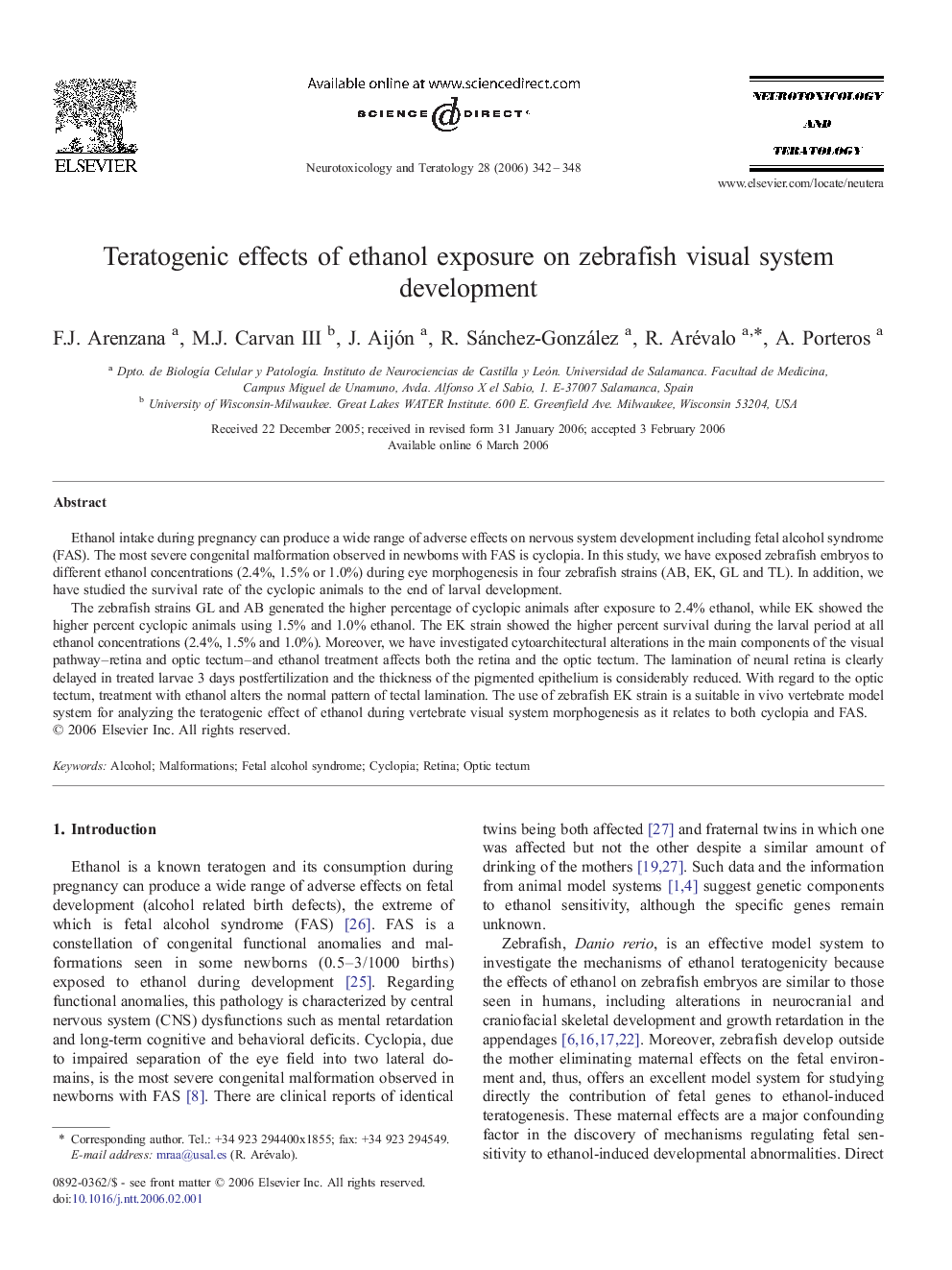| Article ID | Journal | Published Year | Pages | File Type |
|---|---|---|---|---|
| 2592228 | Neurotoxicology and Teratology | 2006 | 7 Pages |
Ethanol intake during pregnancy can produce a wide range of adverse effects on nervous system development including fetal alcohol syndrome (FAS). The most severe congenital malformation observed in newborns with FAS is cyclopia. In this study, we have exposed zebrafish embryos to different ethanol concentrations (2.4%, 1.5% or 1.0%) during eye morphogenesis in four zebrafish strains (AB, EK, GL and TL). In addition, we have studied the survival rate of the cyclopic animals to the end of larval development.The zebrafish strains GL and AB generated the higher percentage of cyclopic animals after exposure to 2.4% ethanol, while EK showed the higher percent cyclopic animals using 1.5% and 1.0% ethanol. The EK strain showed the higher percent survival during the larval period at all ethanol concentrations (2.4%, 1.5% and 1.0%). Moreover, we have investigated cytoarchitectural alterations in the main components of the visual pathway–retina and optic tectum–and ethanol treatment affects both the retina and the optic tectum. The lamination of neural retina is clearly delayed in treated larvae 3 days postfertilization and the thickness of the pigmented epithelium is considerably reduced. With regard to the optic tectum, treatment with ethanol alters the normal pattern of tectal lamination. The use of zebrafish EK strain is a suitable in vivo vertebrate model system for analyzing the teratogenic effect of ethanol during vertebrate visual system morphogenesis as it relates to both cyclopia and FAS.
